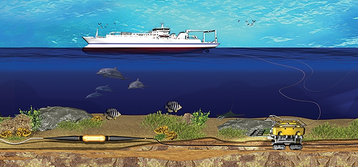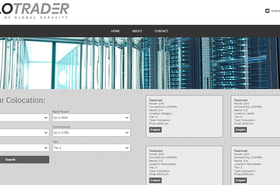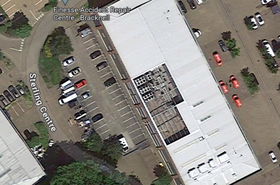The UK and Ireland are welcoming three new subsea cables, increasing connectivity to the region.
Celtix-Connect 2
Work has been completed on the Celtic-Connect 2 subsea fiber cable which runs between Dublin Ireland, the Isle of Man, and Blackpool, England.
The Aqua Comms subsea cable is 301km long in total, home to 15 fiber pairs, and has a design capacity of 300Tbps.
The new cable is connected to two landing points in the Isle of Man: Port Erin and Port Grenaugh, and is part of the commitment set out in the Isle of Man Government’s National Telecommunications Strategy, though was initially planned to go live in 2020.
“Access to global data networks through subsea infrastructure is critical for our future economic growth. Businesses place great importance in the quality of our off-island connectivity so I welcome the investment by Aqua Comms and its partners in this new subsea infrastructure, and am delighted to see the cable go live,” said Alfred Cannan MHK, chief minister of the Isle of Man and Minister for Enterprise.
“The development of sustainable telecommunications and off-island connectivity is one of the key priorities of the Island Plan and helps to create a supportive environment where the economy thrives.”
The subsea cable is now live, and is expected to reach End of Life in 2047.
Iris
The Iris subsea cable will run from Galway Bay in the Republic of Ireland to Thorlakshofn on the south coast of Iceland.
The cable will be deployed and maintained by Farice, a telecommunications service company owned by the Icelandic government, and is expected to be operational in 2023.
Thorlakshofn was chosen for its proximity to Reykjavik and will connect to a Verne Global data center. According to Farice CEO Þorvarður (Thorvardur) Sveinsson, Galway was selected for its calm local waters and accessibility, along with other factors.
“Geographically, it is accessible to Iceland, while the local waters are relatively calm, which means it’s a stable and secure option to bring a cable ashore on the Irish coast,” he said.
“The area also has established secure terrestrial connectivity options, linking it to Dublin, which is, in turn, a major network hub in Europe. Its existing network density made it a very attractive location.”
The appeal of Galway has been reaffirmed by the plans for Finnish company Cinia and US telco Far North Digital, who are building the Far North Fiber, a subsea cable linking Europe to Japan while avoiding Russian waters.
Work on the Iris subsea cable began in 2020 with a thorough marine survey of the route. The laying of the subsea cable commenced in May this year with a landing in Iceland, and according to Sveinsson, is on track to be fully completed in August.
Zeus
Zayo announced the launch of the Zeus subsea route on July 11, connecting the UK and continental Europe.
The subsea cable has access points in Lowestoft, UK, and Zandvoort, the Netherlands.
Zayo’s COO, Yannick Leboyer, told Reuters that: “From a data center standpoint, London, Amsterdam, and Frankfurt for us are the most critical routes, so that's why we decided to go first with that one."
The cable is buried between 2 and 3 meters beneath the sea bed, far more than the usual half a meter, and has 96 fiber pairs. Its wavelength throughput on a single channel between London and Amsterdam can reach up to 600Gbps, and the network can handle 2650 Tbps of C Band at capacity.
At the same time, Zayo continuously monitors Zeus via Optical Time Domain Reflectometer (OTDR) devices for quick fault identification, as well as a guard vessel to monitor any activity along the path.
Zayo was bought by investment firms Digital Colony (now DigitalBridge) and EQT for about $8.2 billion in 2019 and owns several terrestrial fiber routes.






